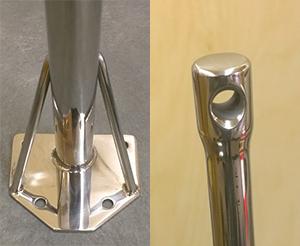Hi all,
Took my new (to me) 1989 Hunter 33.5 our yesterday, winds were 15 knots gusting just a little higher. I tried to do some research before I left about when to put in a reef on these boats and seems like around 17 knots is when to put in the first reef, so I went full sail (with just a regular jib, don't have a genoa) to try and see how fast I could get the boat going. A few times the wind was to the point where you start hearing it whistle through the rigging. But it made me wonder...what does it to actually dismast one of these Hunter's made in the late 80's / early 90's? I read a news comment by someone with a 33.5 who was dismasted when he had a single reef in and the winds gusted to 30; I wasn't in those conditions but I have no idea what these things are built to take. I have no plans to try and test the limits but knowing where the danger zone lies will make me worry less under conditions the boat is built to take.
Second question, I understand that one of the biggest causes for dismasting under normal conditions is either worn rigging or delamination of fiberglass near the chainplates. While I can inspect the chainplates coming out of the deck, is there a way to see if the chainplate foundation is solid or if it has been weakened?
Thanks for keeping a great forum going.
Best
'Dubs
Took my new (to me) 1989 Hunter 33.5 our yesterday, winds were 15 knots gusting just a little higher. I tried to do some research before I left about when to put in a reef on these boats and seems like around 17 knots is when to put in the first reef, so I went full sail (with just a regular jib, don't have a genoa) to try and see how fast I could get the boat going. A few times the wind was to the point where you start hearing it whistle through the rigging. But it made me wonder...what does it to actually dismast one of these Hunter's made in the late 80's / early 90's? I read a news comment by someone with a 33.5 who was dismasted when he had a single reef in and the winds gusted to 30; I wasn't in those conditions but I have no idea what these things are built to take. I have no plans to try and test the limits but knowing where the danger zone lies will make me worry less under conditions the boat is built to take.
Second question, I understand that one of the biggest causes for dismasting under normal conditions is either worn rigging or delamination of fiberglass near the chainplates. While I can inspect the chainplates coming out of the deck, is there a way to see if the chainplate foundation is solid or if it has been weakened?
Thanks for keeping a great forum going.
Best
'Dubs


